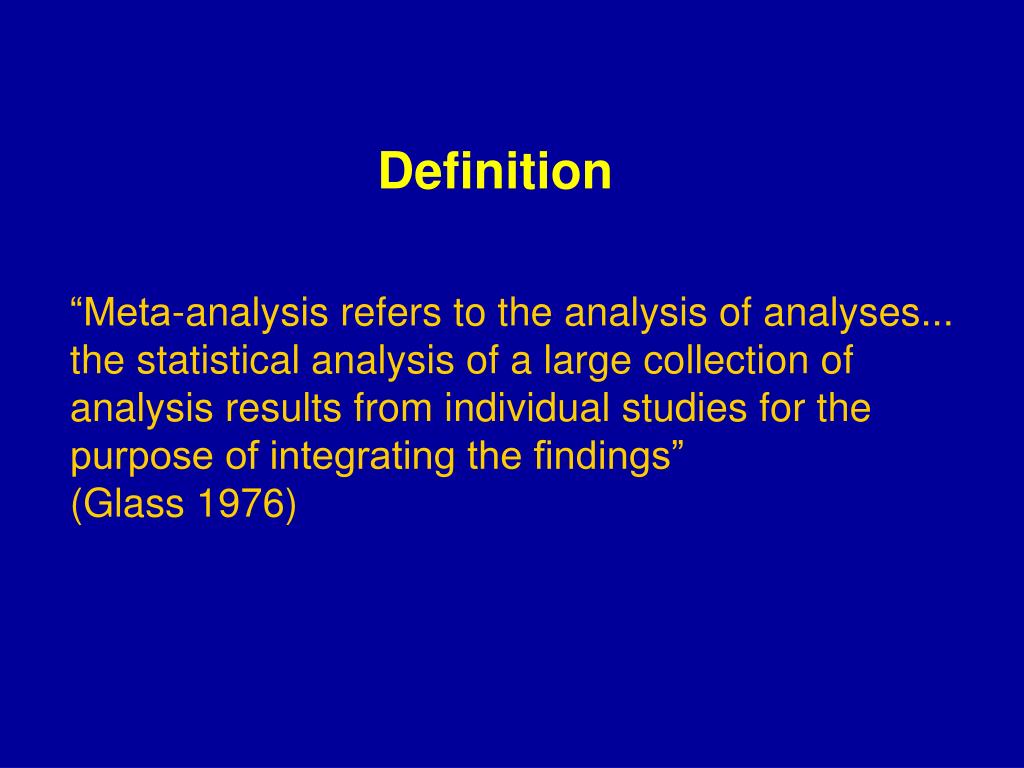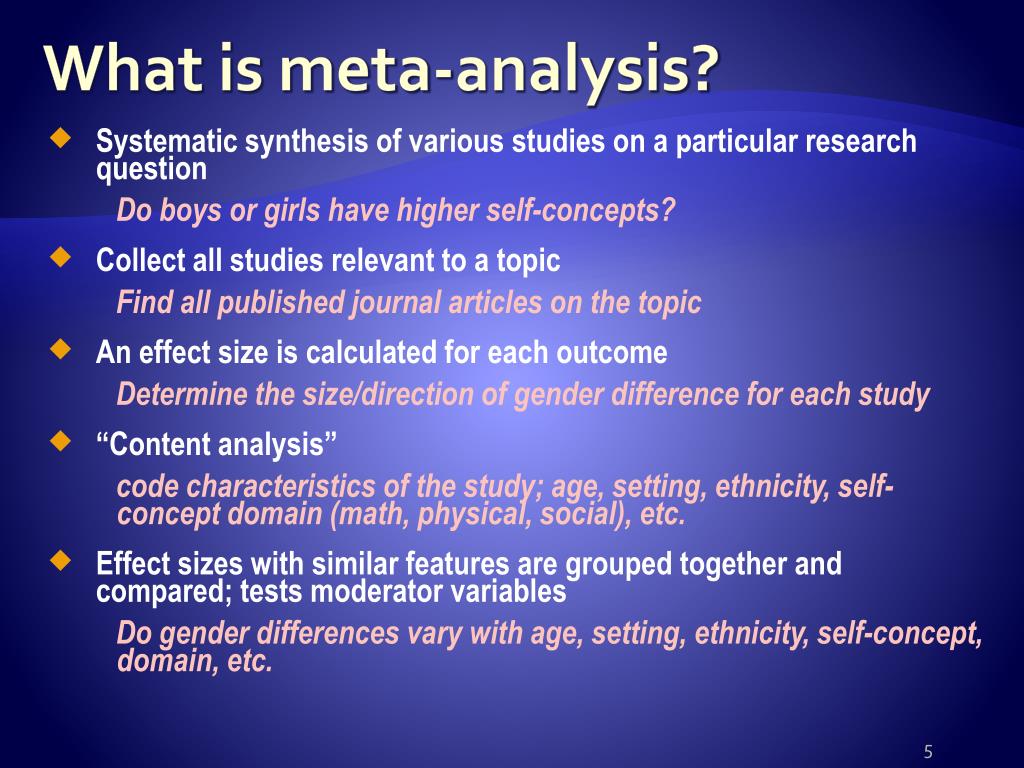

This overview of effect size measures is helpful in understanding different forms of meta-analysis (e.g., correlational or group comparisons).

In contrast, meta-analyses provide a more objective approach by quantitatively rather than qualitatively aggregating the available evidence.įield ( 2005) processed with briefly introducing different effect size measures as the essential basis for any meta-analysis. According to Field, the problem with qualitative reviews is that different researchers might come to different conclusions based on the same literature. He begins with a brief comparison of meta-analyses and discursive literature reviews, highlighting the advantages of the former.

307), introducing the most important elements of meta-analysis. įield ( 2005) provides a “whistle-stop tour” (p. Gilbert (eds.), A handbook of research methods in clinical and health psychology (pp. We close by summarizing two articles about reporting standards for meta-analyses and open science principles.įield, A. We begin by describing what a meta-analysis is and what general best-practice recommendations for meta-analyses are available before introducing articles about the different phases of conducting a meta-analysis: literature search, coding and transforming effect sizes, artifact correction, statistical analyses, and quantifying heterogeneity and publication bias. In addition to the 12 sources that we discuss in more detail, we provide further reading recommendations containing additional information on the respective topic. This article is structured so that the annotated literature refers to increasingly specific questions. This annotated reading list may also serve as a guide for reviewers and editors who evaluate meta-analytic studies. In this manuscript, we present an annotated reading list covering the most relevant aspects for researchers aiming to conduct a meta-analysis in psychology. However, due to the wide range of meta-analytical methods and procedures, none of the existing publications covers all aspects relevant to conducting a meta-analysis. To date, there are several excellent and comprehensible introductions to conducting a meta-analysis in the form of introductory articles (e.g., Cheung & Vijayakumar, 2016) or books (e.g., Borenstein et al., 2009b Cooper et al., 2009). Depending on the colleagues’ prior experience, their questions vary in complexity ranging from basics (“Where do I start with my meta-analysis?”) to specifics (e.g., “Which methods are most appropriate for assessing publication bias?”). Any researcher who has published a handful of meta-analyses will regularly receive questions from colleagues that are interested in conducting a meta-analysis. Meta-analysis has become an important and widely used technique to synthesize research findings in psychology.


 0 kommentar(er)
0 kommentar(er)
